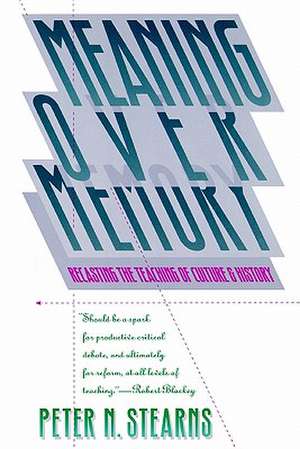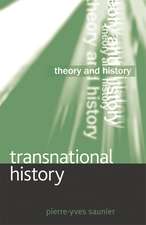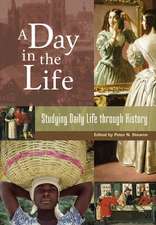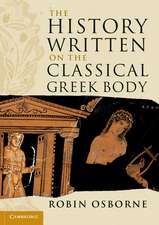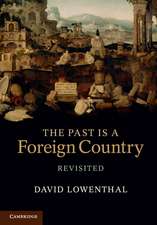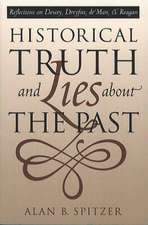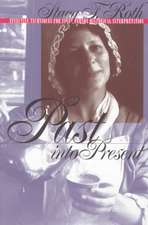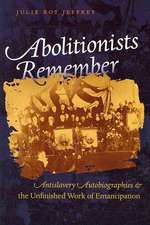Meaning Over Memory: H. Eugene and Lillian Youngs Lehman
Autor Peter N. Stearnsen Limba Engleză Paperback – 31 iul 1995
Din seria H. Eugene and Lillian Youngs Lehman
-
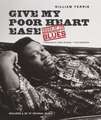 Preț: 181.84 lei
Preț: 181.84 lei -
 Preț: 224.94 lei
Preț: 224.94 lei -
 Preț: 208.14 lei
Preț: 208.14 lei -
 Preț: 269.83 lei
Preț: 269.83 lei - 15%
 Preț: 517.63 lei
Preț: 517.63 lei -
 Preț: 312.30 lei
Preț: 312.30 lei -
 Preț: 262.15 lei
Preț: 262.15 lei -
 Preț: 438.55 lei
Preț: 438.55 lei -
 Preț: 331.62 lei
Preț: 331.62 lei -
 Preț: 437.18 lei
Preț: 437.18 lei -
 Preț: 345.72 lei
Preț: 345.72 lei -
 Preț: 343.39 lei
Preț: 343.39 lei -
 Preț: 271.19 lei
Preț: 271.19 lei -
 Preț: 379.74 lei
Preț: 379.74 lei -
 Preț: 345.72 lei
Preț: 345.72 lei -
 Preț: 217.40 lei
Preț: 217.40 lei -
 Preț: 265.80 lei
Preț: 265.80 lei -
 Preț: 312.90 lei
Preț: 312.90 lei -
 Preț: 272.12 lei
Preț: 272.12 lei -
 Preț: 344.54 lei
Preț: 344.54 lei -
 Preț: 268.30 lei
Preț: 268.30 lei -
 Preț: 308.83 lei
Preț: 308.83 lei -
 Preț: 435.45 lei
Preț: 435.45 lei -
 Preț: 435.66 lei
Preț: 435.66 lei
Preț: 386.45 lei
Nou
Puncte Express: 580
Preț estimativ în valută:
73.96€ • 80.31$ • 62.12£
73.96€ • 80.31$ • 62.12£
Carte tipărită la comandă
Livrare economică 22 aprilie-06 mai
Preluare comenzi: 021 569.72.76
Specificații
ISBN-13: 9780807844854
ISBN-10: 0807844853
Pagini: 270
Dimensiuni: 140 x 234 x 21 mm
Greutate: 0.38 kg
Editura: University of North Carolina Press
Seria H. Eugene and Lillian Youngs Lehman
ISBN-10: 0807844853
Pagini: 270
Dimensiuni: 140 x 234 x 21 mm
Greutate: 0.38 kg
Editura: University of North Carolina Press
Seria H. Eugene and Lillian Youngs Lehman
Textul de pe ultima copertă
In the midst of the heated battles swirling around American humanities education, Peter Stearns offers a reconsideration not only of what we teach but also of why and how we teach it. While conservatives defend a museum-like humanities curriculum, their opponents argue for opening the canon to the works and lives of women and minorities. This approach, Stearns cautions, risks substituting one memorized content for another. Stearns suggests an alternative strategy; one that overlaps with some of the radicals' goals but moves on to a more ambitious reassessment of what the humanities should convey to students. Such a humanities program, says Stearns, should teach students not just memorized facts but analytical skills that are vital for a critically informed citizenry. "In dealing with the current furor over conventional humanistic coverage versus multiculturalism", Stearns says, "I join a few other recent observers in offering intermediate positions and certainly in rejecting the extremes urged from both sides". But, he adds, "My goals are more radical than the radicals' in that I seek to reshape the discussion of the humanities by moving away from debates about which groups it would privilege - essentially a turf fight, however recondite its phrasing - and toward a determination of what kinds of analyses it should further. I aim for a real transformation of humanities education in light of the kinds of analytical perspectives - the habits of the mind - it should inculcate. Teaching in the humanities should above all foster a critical imagination - and this point is not recognized in most of the current debates". Stearns urges the use of innovative research as the basis of the humanitiescurriculum, following the practice of scientific disciplines. He offers specific suggestions on translating curriculum goals into courses that can be taught alongside or instead of the more conventional staples. It is important, Stearns concludes, to use the current spirit of rancor constructively to build a solid educational structure, one that rests on humanities scholarship but aims to help students better understand the nature of human culture and social behavior.
